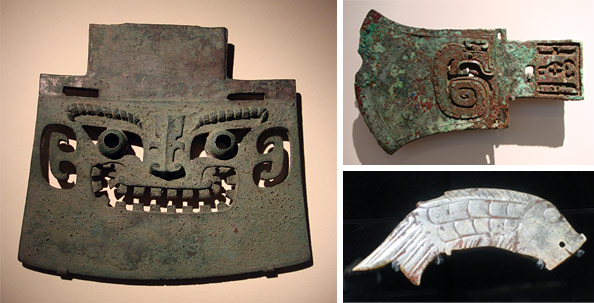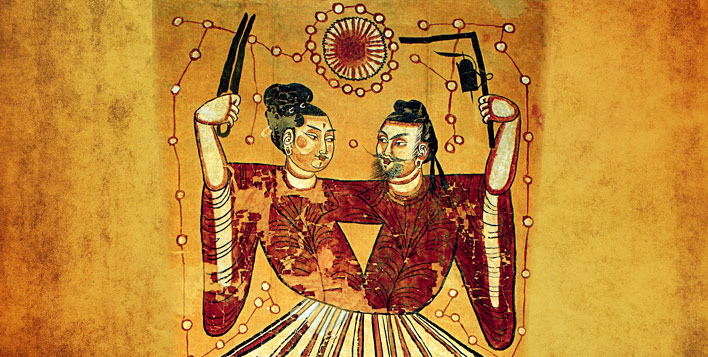
Ancient China
The Shang Dynasty 1600–1045 BCE
Historians note that the Shang dynasty was itself believed to be mythological until written evidence was found in the 1920s. So we may yet learn that China’s Golden Age of peace and prosperity under wise and virtuous rulers did in fact exist.
Around 1750 BCE, 3,750 years ago, the Yellow River basin was unified under the rule of a warrior aristocracy, known as the Shang people, whose first king was Tang. At this time a network of very small towns, each governed by a representative of the royal household, was organized into a kingdom clustered around the great river.
From king Tang to king Zhou, the Shang Dynasty lasted nearly 600 years, having 30 emperors through 17 generations, and with the Shang Chinese history finally emerges from the shadows of legend and folklore.
Since total solidarity among clan members was absolutely necessary for the Shang kingdom to remain unified and survive, they defeated or made alliances with rival lords, appointed their own clansmen as military overseers, and brought the whole region under their central control.

The earliest written records of Chinese history are from this Shang period. Luckily for historians, divination was an important part of their culture, used for both political and religious purposes. Over 100,000 fragments of oracle bones have been found left over from the divination ceremonies of the Shang royal courts. These bones or shells were inscribed with questions and then heated, causing cracks to appear on their surface. The cracks were interpreted, presumably by specialist interpreters, and once an answer was obtained the procedure was repeated several times to ensure accuracy and the final answer engraved on the bone or shell.
They record queries made by powerful people and pose questions such as:
“Shall we launch an expedition against the Yi?”
“Should we marry a princess from the Rong?”
“Will the rain cause disaster or not?”
“Should the king make an alliance with Lord A against Lord B?”
“Will God approve if we build a village there?”
“Will the queen give birth to a son?”
Significant events were also noted in some inscriptions:
“On such-and-such a day, the chariot and horses of the petty official Q collided with the king’s chariot, and the driver was knocked out.”
Here’s one noting the success of a diviner:
“Diviner Y made an oracle on day D that the upcoming ten-day period T would be unlucky, and two days later the king was injured.”
The dating of the bones varies but the majority of them stem from the late Shang Dynasty: 1250 to 1046 BCE.
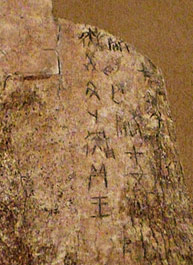
From these inscribed fragments we know that the Shang believed heaven and earth to be co-terminous realms, both immediately available to human beings. The Divine Realm paralleled the Earthly Realm, each with their court, minions and assistants. A great task of the king was to maintain harmony between these realms, because the well-being of everyone depended on it.
The Great God, Shang Di—the Lord Supreme, was served by lesser gods like the sun, the moon, the wind, rain and other natural forces. In common with Indo-Aryan and other pre-Axial societies, the Chinese turned to these lesser gods for help with their problems, harvest, health and hunting and military campaigns. Their pantheon included even lesser local gods, whose power was confined to a city or village. Typical, too, of pre-Axial cultures, the bone inscriptions reveal that these early Chinese were only concerned with what the deities could do for them. The gods desired sacrifices and tributes and in return they gave people the divine assistance they needed in worldly matters. There are no expressions of feeling towards the gods and no evidence that the gods were at all concerned with the moral behavior of human beings.
Filial piety, responsibility and the reverence of parents was an important aspect of Shang culture. The concept is that since children are greatly indebted to their parents for giving them life, the only possible response to this is reverence, which continued long after a parent’s death. Ancestors existed in the spirit world and exerted their influence on living family members. They were consulted on important family matters and honored with sacrifices, and in turn, they would mediate with the gods on behalf of the living relatives. The king’s ancestors had great influence over the king and were able to mediate between him and Shang Di, the Lord Supreme. Kings would serve as the head of ancestor and spirit-worship. Evidence from excavations of royal tombs indicates that royal members were buried with articles of value, presumably for use in the afterlife. Perhaps for the same reason, sites have been found where hundreds of commoners, who may have been slaves, were buried alive with the royal corpse.
Ancestors existed in the spirit world and exerted their influence on living family members.
In 1928, an unwalled city that was the Shang capital in about 1200 BCE was found with remains of what apparently was a royal palace and several royal tombs containing precious bronze vessels and jade, chariots, animal and human sacrifices, including a large trove of inscriptions on bones and tortoise shells. These provide examples of thousands of symbols of the earliest Chinese writing and show that writing was by this time already well developed.
Ghosts were also part of the unseen world, usually understood to be the malevolent spirits of the dead who had not been properly buried. (Greeks had the same idea: ghosts would haunt them until they were given a proper burial.)
“The Chinese called this desire to respond to an act of kindness bao. Thus virtue carried with it the power to affect the lives of others in a virtuous way.”
De, which would become an important concept for Chinese Axial Age thinkers, was mentioned on many of these inscribed fragments. At this time in Chinese history, it referred to a power that was generated within a person who acted generously or kindly to a god or human being. Unusual for a pre-Axial idea, it was the inner disposition or attitude within the act that was important for De to manifest. People who committed many of these acts accumulated De; thus, virtuous people were regarded as strong people, and those who were recipients of their compassionate acts were believed to feel indebted to the person in return; as a result, they would want to respond with a similar act of kindness.
“The Chinese called this desire to respond to an act of kindness bao. Thus virtue carried with it the power to affect the lives of others in a virtuous way. Your virtuous act towards me encourages my virtue, prompting me to act kindly. De and Bao were regarded as being causally connected in the nature of things. They weren’t viewed as psychological phenomenon but as natural phenomenon. Operating as surely as we think of the way gravity works, or the way Indians view the function of karma.” writes Professor Mark W. Muesse in Religions of the Axial Age: An Approach to the World’s Religions.
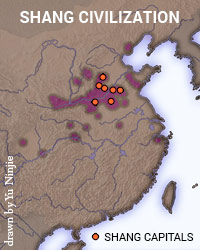
Shang culture was mainly based on agriculture, animal husbandry and hunting. During this period, many people were captured in war and reduced to slavery, and even among the free commoners, forced mobilizations for large building projects are thought to have been the norm. It is said that the Shang system organized the common people by occupation and craft into supervised groups.
The prime status symbol of the Shang aristocrat was a war-chariot, the embodiment of warrior power. Shang warriors used bronze weapons and used elaborate bronze ceremonial objects to mark their legitimacy. Bronze takes a sharper edge than stone and a bronze blade is less fragile than a stone blade. Bronze casting and pottery advanced during the Shang dynasty, with bronze being used for art as well as weapons. Other advances included the invention of many musical instruments, and observations of Mars and various comets by Shang astronomers.
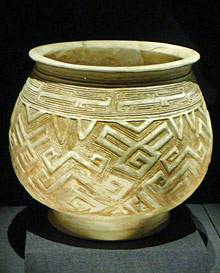
The Shang Dynasty saw its demise as the kingdom’s elite, the groups of local warlords responsible for the defense of the area and for the collection of taxes to be delivered to the king, gradually sought their own power. This eventually lead to decentralization and political weakness. By the end of the Shang Dynasty several warlords had created their own personal fiefdoms. Finally the last Shang Ruler, Shang Zhou, committed suicide after his army was defeated by the Zhou.
Responsibility for the balance and harmony, so important to the Chinese culture, had fallen in great measure to the king, thus politics and religion were closely connected. Typical of pre-Axial times, these rituals focused on the harmony and well-being of society as a whole, with no thought of the individual. But as the Axial Age in China approaches, this will begin to change.
